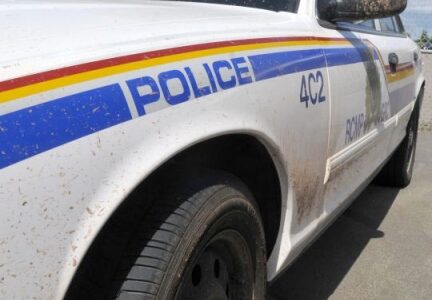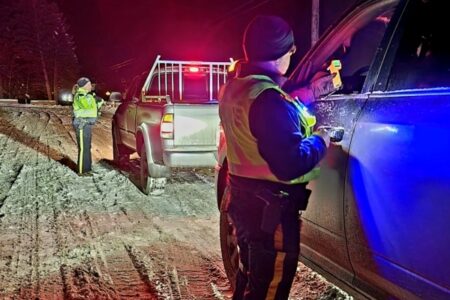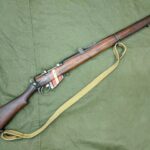Tree treatment helps rare woodpeckers keep their home
A 2007 wildfire in a portion of the Pend D’Oreille Valley was good news for a family of Lewis’ woodpeckers, a species which prefers dead or well-decayed trees for nesting.
But while the fire created valuable breeding habitat for the woodpeckers, the high risk of trees falling was a serious threat to transmission lines.
The solution: an innovative approach to cutting the trees that has eliminated this risk while saving valuable wildlife habitat.
“Right after the fire, a family of Lewis’ woodpeckers, which are both federally and provincially threatened, moved in and has been using the area every summer,” said Fish and Wildlife Compensation Program (FWCP) biologist Irene Manley.
“Unfortunately many trees in this area were posing a threat for transmission lines and were slated for removal, which meant the nesting habitat for these woodpeckers would be destroyed.”
The FWCP, a partnership between BC Hydro, the Province of B.C. and Fisheries and Oceans Canada, worked together with the Kootenay Vegetation Management team at BC Hydro. It identified 12 of the larger trees – some of the oldest structures remaining – that could be salvaged and saved for the woodpeckers.
Instead of cutting the trees at the base as is standard practice, tree specialists from the vegetation management company Asplundh climbed the trunks and topped them at approximately the 15- to 20-metre mark, or about two thirds of their original length.
“Now the dead trees are short enough that they no longer pose a threat to the transmission lines, but tall enough that the decaying trunks will provide an important nesting habitat for many decades into the future,” adds Manley.
Lewis’ woodpecker nests a rarity
How valuable is this breeding habitat? There’s only one other active Lewis’ woodpecker nest site in the entire West Kootenay region.
The Lewis’ woodpecker is a medium sized (22 cm.) cavity nester with a greenish-black back and pink belly. Unlike other woodpeckers, Lewis’ are very weak cavity excavators and they prefer dead, well-decayed trees that are easier to build a nest in. Fire-killed Douglas–fir trees are their favourite.
“In most situations dead trees have advanced rot and decay, making them dangerous to climb. Fortunately these trees were recently fire killed and were relatively sound,” said project supervisor, Bill Laflin, vegetation maintenance coordinator with BC Hydro.
“The dead trees were cut higher than would typically be done so that both the safety objectives of transmission line operations and valuable breeding habitat for a rare bird were achieved.
“Given the ecological importance of the area, it was very rewarding to come up with a proactive solution that helped the continued smooth delivery of electricity while saving important habitat for this threatened bird.”
For more information on other FWCP projects visit fwcp.ca.
The FWCP funds projects to conserve and enhance fish, wildlife and their supporting habitats affected by BC Hydro owned and operated generation facilities in the Coastal, Columbia and Peace regions of British Columbia.
























Comments